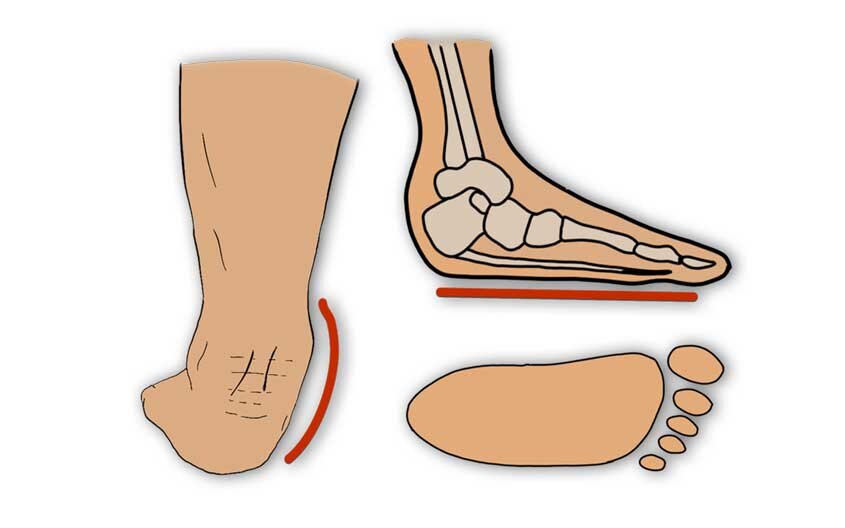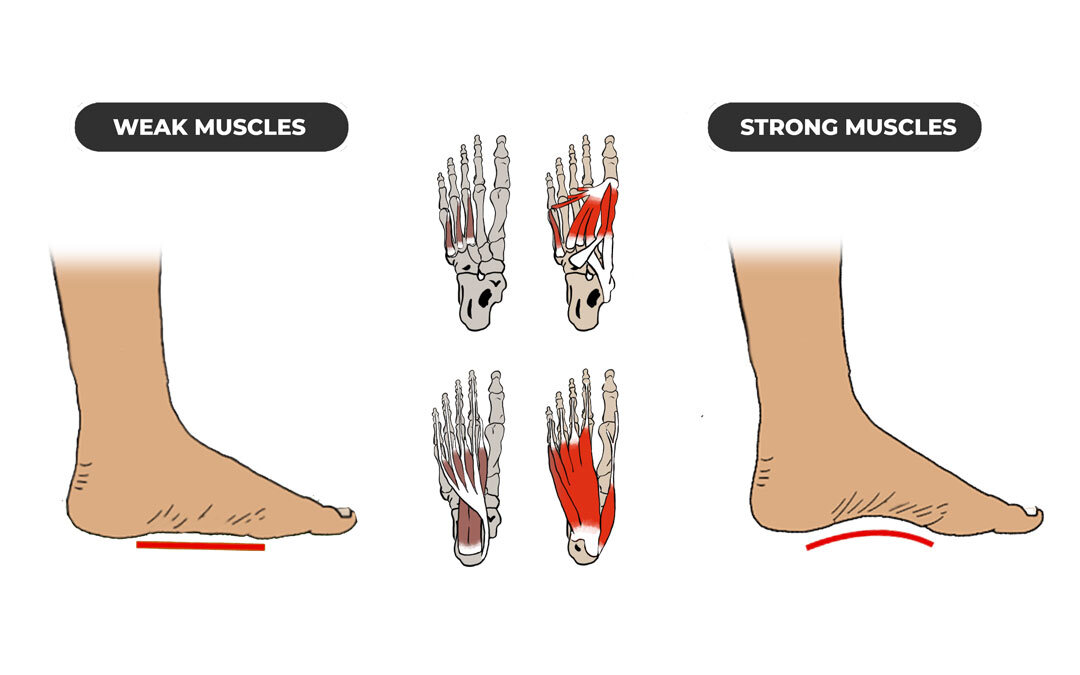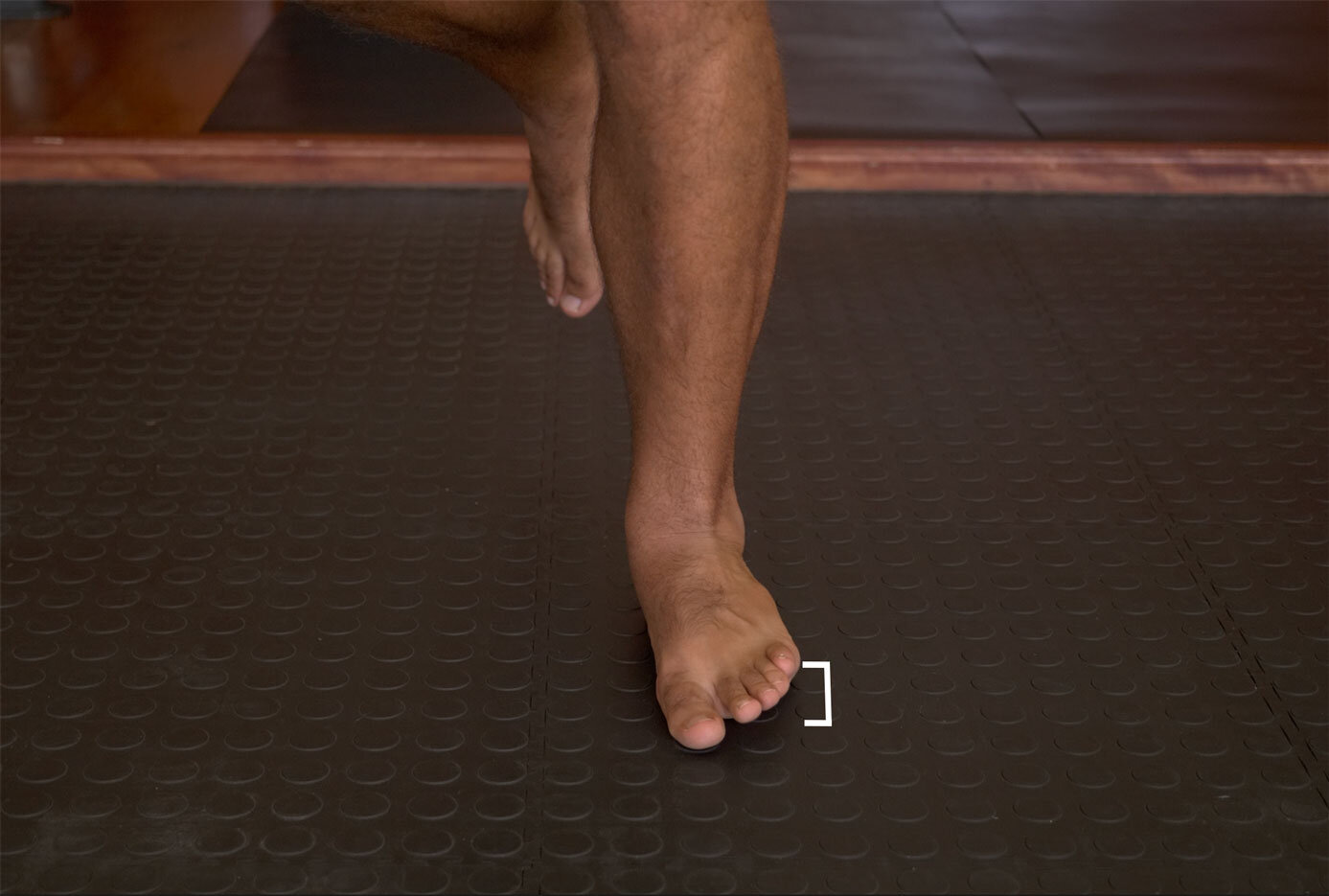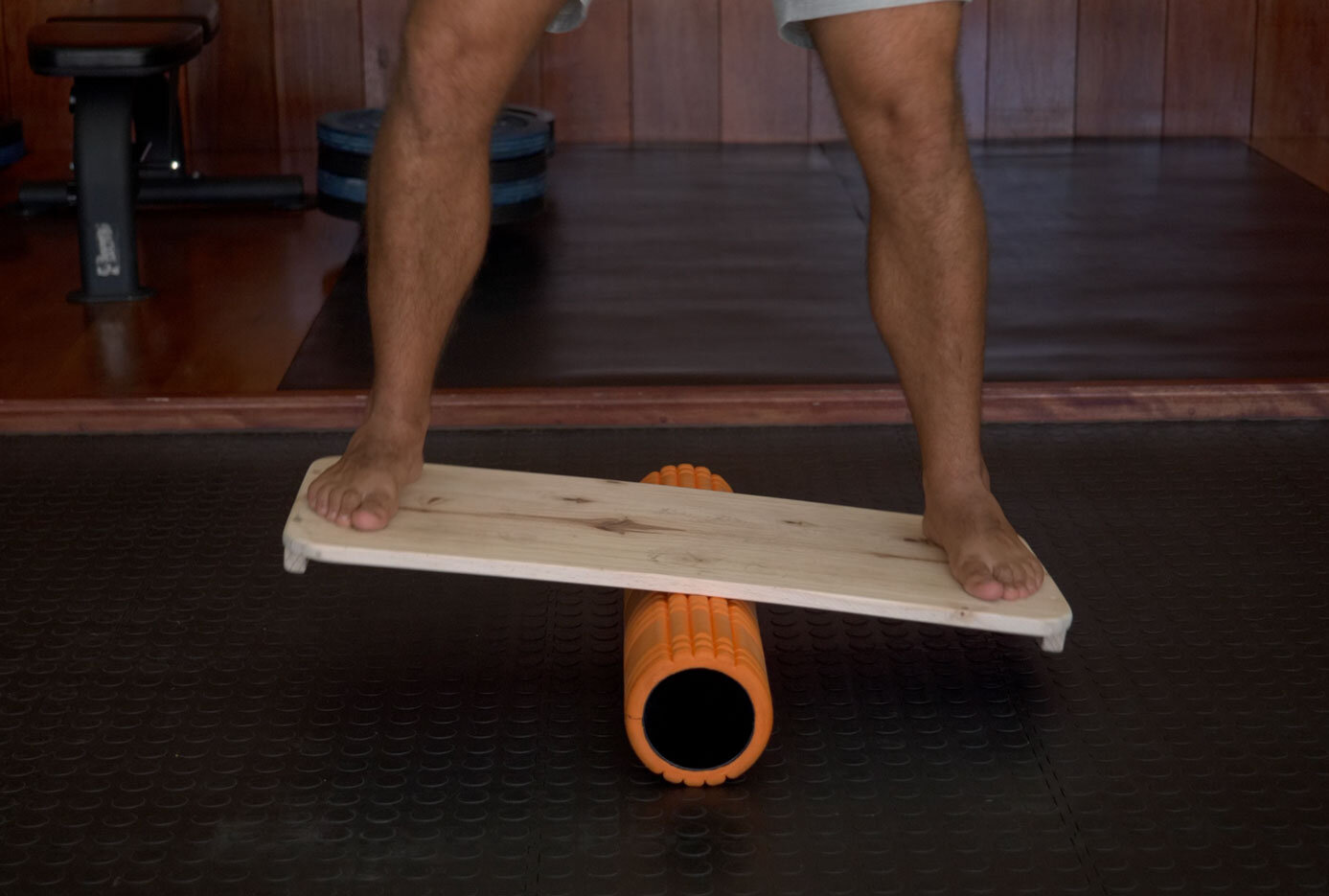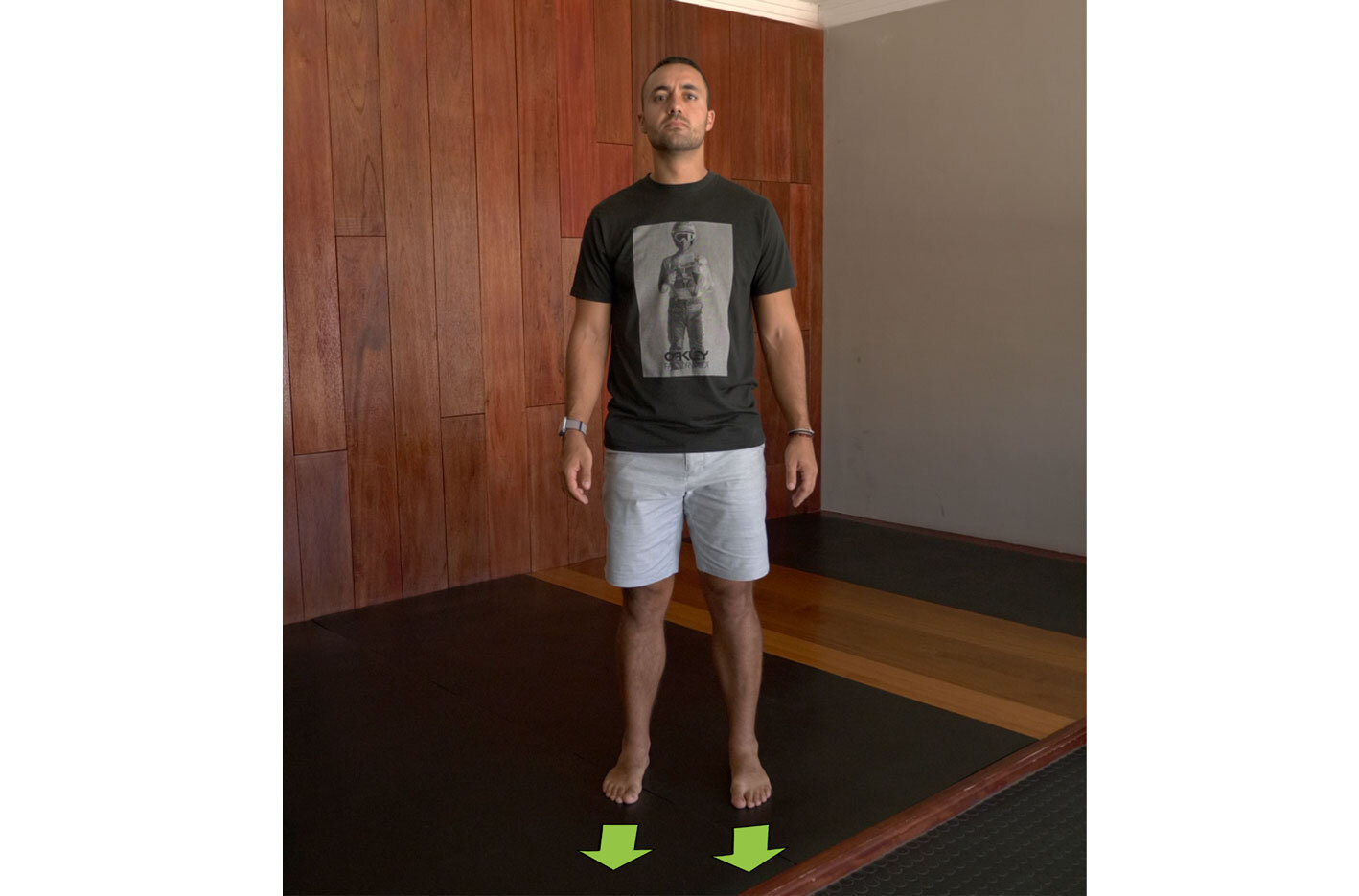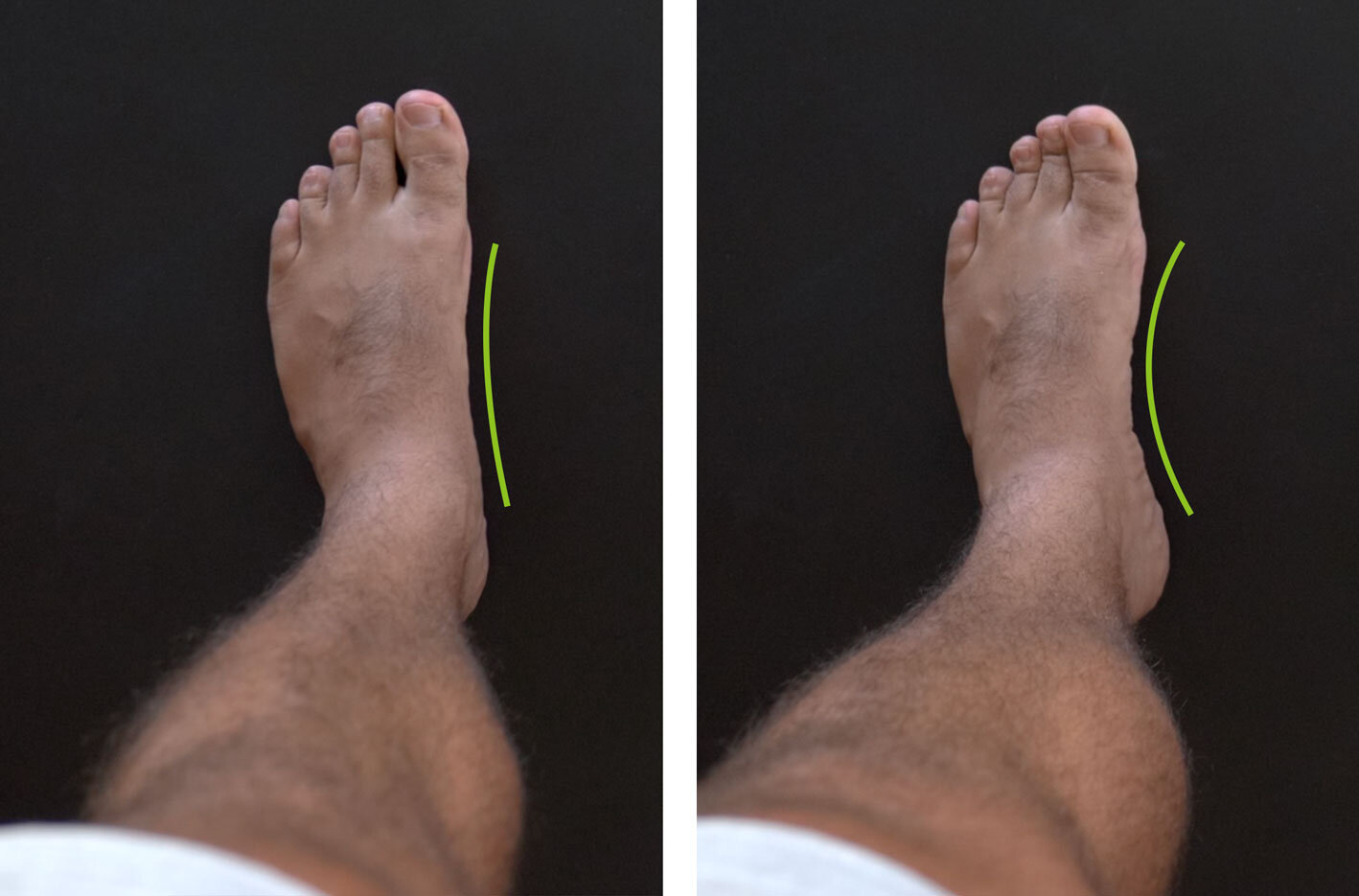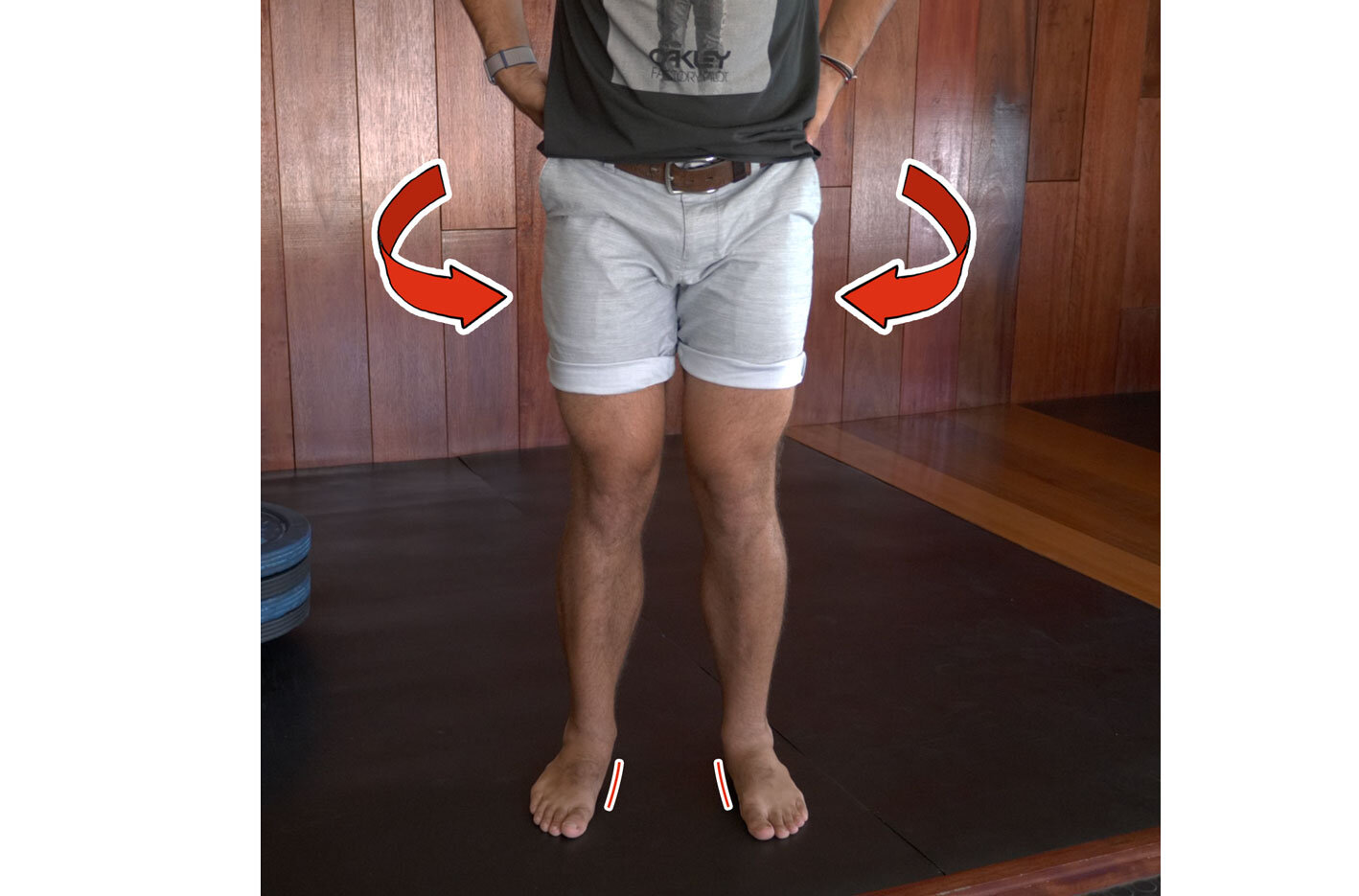4 Foot Exercises to Fix Flat Feet and Strengthen Fallen Arches
Written by Christopher Ioannou, BSc in Sports & Exercise Science
Featuring Dr. Peter Francis, PhD in Exercise Science
Reading Time: 11 minutes
The video version of this post:
In this post I’m going to explain what flat feet really are. I’ll cover four helpful foot-strengthening exercises, as well as other important exercise-related factors that need to be considered when trying to help fix flat feet. Let’s get started…
Prevalence of Flat Feet
Figure 1 - Image of Flat Feet
Flat feet have been found to be the most prevalent foot problem in the US [1][2].
Now, just to be clear, there are two types of flat feet: one that is acquired and one that is actually a deformity. This was explained in a recent podcast we did with Dr. Peter Francis, a top researcher in barefoot running and rehabilitation.
What Dr. Francis said was that we seldom see flat feet deformities in which the foot arch is not present at all. What we are actually seeing on a widespread scale is an acquired flat foot, also known as “flexible flat foot” or “fallen arches.” In this case, the foot arch is present, but does not tolerate dynamic movement.
Figure 2 - Flexible Flat Foot - Arch Is Present When Relaxed, but Flattens Under Load
In other words, the intrinsic foot muscles fail to maintain the arch out of weakness, causing the foot arch to collapse and flatten out under load.
(Learn more about Dr. Peter Francis’ work through his blog.)
Fortunately, this common form of flat foot can be reversed with the right exercises and techniques, which we will touch on in this video.
The Role of the Muscles in the Foot Arch
First, it is important to recognize that the feet have more than 100 muscles, ligaments and tendons spread across four layers.
Figure 3 - Layers of Foot Muscles, Tendons and Ligament
These four layers of stabilizing structures control the amount of foot arch deformation in each step. Therefore, if these layers of muscles and connective tissues are weak or unresponsive, the integrity of the foot arch is lost, which usually results in the collapsed arch shape we described earlier as acquired flat feet [3].
Figure 4 - Flattened Arch Due to Weakened Muscles vs High Arch Due to Strong Foot Muscles
To prove just how crucial the muscles of the foot are at forming a foot arch, the authors of one study injected anesthetic into the foot, paralyzing the intrinsic foot muscles. The results were a 50% reduction in dynamic arch height once the anesthetic was applied [4].
Source: Fiolkowski, P., Brunt, D., Bishop, M., Woo, R. and Horodyski, M., 2003. Intrinsic pedal musculature support of the medial longitudinal arch: an electromyography study. The Journal of Foot and Ankle Surgery, 42(6), pp.327-333.
So, as we can see from this study, it is impossible to maintain a robust foot arch without properly functioning foot muscles.
Therefore, it is imperative to strengthen the internal muscles of the feet in order to reduce the presence of flat feet.
We can do this in the following ways:
Strengthening the Feet by Wearing Barefoot Shoes
The first way to strengthen the muscles of the feet is by wearing barefoot shoes or being completely barefoot as much as possible.
Figure 5 - Walking with Barefoot Shoes
You see, modern shoes, with their thick soles and arch cushioning, support the feet too much, to the point where the innate structures start to weaken.
Figure 6 - Shoes with Soft Soles and Cushioned Arch Support
We could, thus, compare the function of the foot’s bony structure to that of the spine and its surrounding musculature, which is meant to stabilize it.
Figure 7 - Comparison of the Spine with the Bony Foot, Side by Side
Continuing this thought, the ankle then acts in the same way as the hip; it is meant to hinge and generate the moving forces.
Figure 8 - Motion of the Hip is Similar to the Motion of the Ankle
This means that, just as we shouldn’t rely on a weightlifting belt to always stabilize the spine, so we shouldn’t rely on modern footwear or inner soles to stabilize our feet.
Figure 9 - Wearing Stiff Shoes on Your Feet is Like Wearing a Weightlifting Belt Around Your Trunk
If you want to learn more about this concept, I highly recommend the paper titled: The foot core system: a new paradigm for understanding intrinsic foot muscle.
There is a lot more research available to back up this correlation between cushioned and supportive shoe use and flat feet. For example, in one study, in which 1,846 people were surveyed, it was found that children who wore shoes for more than eight hours a day before the age of six had a significantly higher prevalence of flat feet later in life than those who were shod for fewer hours at a young age [5].
Source: Sachithanandam, V. and Joseph, B., 1995. The influence of footwear on the prevalence of flat foot. A survey of 1846 skeletally mature persons. The Journal of Bone and Joint Surgery. British volume, 77-B(2), pp.254-257.
Another study, in The Journal of Bone and Joint Surgery, in which 2,300 children were surveyed, it was found that flat feet were more prevalent among those who predominantly wore closed shoes rather than slippers and sandals [6].
Source: Rao, U. and Joseph, B., 1992. The influence of footwear on the prevalence of flat foot. A survey of 2300 children. The Journal of Bone and Joint Surgery. British volume, 74-B(4), pp.525-527.
So, being barefoot or utilizing barefoot shoes serves as a kind of “gym for the feet,” if you will, because as soon as support is taken away, the muscles and other supportive structures of the feet are forced to work hard to stabilize the body during motion.
My team and I are currently using Vivobarefoot Shoes and are proud to be affiliated with this brand. As part of our partnership with them, they are offering our audience 12% discount on their shoes using the coupon code EHEALTH12.
Also, check out our Vivobarefoot review.
Foot-Strengthening Exercises
Okay, so if we combine barefoot movement with dedicated foot-strengthening exercises, this is where the magic happens.
For example, in a study conducted in 2018, Hutchison and colleagues found that eight weeks of dedicated foot-strengthening exercises, combined with two hours per day of barefoot motion, drastically improved foot function in 23 participants with severe flat feet [7].
So, let’s then run through four of some of the best foot-strengthening exercises:
Towel Grabs
Start by placing a small hand towel on a slippery surface such as a tiled floor.
Then try to grab the far end of the towel with your toes and slowly pull it closer to you. Then smooth out the towel and repeat with the opposite foot.
Figure 10 - Towel Grabs Exercise
It’s not uncommon for the feet to cramp up while doing this exercise in the beginning. It’s just a sign that the feet muscles need to be strengthened.
Heel Raises
Unlike calf raises, these particular ones don’t require a large range of motion to be effective at strengthening the arch of the foot.
Figure 11 - Heel Raises vs Calf Raises
It’s just important to perform the exercise with control, so that the foot muscles are utilized instead of shifting the load onto the calves.
Single Leg Hop
Figure 12 - The Single Leg Hop
This is a slightly more difficult exercise, because each foot will have to bear the brunt of the entire bodyweight. The most common mistake made with this exercise is to allow the foot to collapse inwards. This motion puts undue strain on the tissues in this area.
Figure 13 - Foot Collapsing (Pronating) Upon Landing
So, to prevent this problem from occurring, it’s important to take very small hops at first and to focus on maintaining an arch. Over time, as strength and control is built up in these areas, the jumps can become more pronounced.
Figure 14 - The Range of Single Leg Hop Heights: Beginner-Advanced
Single Leg Balance
The objective is to maintain the tripod foot position, whereby the big toe, pinky toe and heel are all in contact with the ground at the same time, while maintaining the foot arch.
Figure 15 - Tripod Foot-3 Points of Contact with the Ground
So, if the foot loses stability and pronates inwards too much, the arch will flatten and the pinky toe will lift.
Figure 16 - Over-Pronation and Arch Collapsing Causes Pinky Toe to Lift
By contrast, if too much compensation is made in the opposite direction, then the body weight will shift to the outside of the foot, causing the big toe to lift and lose connection with the ground.
Figure 17 - Excessive Supination Causes The Big Toe to Lift
To increase the difficulty of this exercise, one can swing the other leg to increase the stability demands of the supporting foot.
Figure 18 - Single Leg Balance While Swing Opposite Leg in The Air
A more advanced version of this exercise is wobble or balance board training. These devices, which can be used at home, have been found to target all the small stabilizing muscles in the feet and around the ankles [8].
Figure 19 - Wobble/Balance Board Training
While these exercises are great to get you started on the journey of building stronger foot arches and reversing the presence of flat feet, there is a lot more to it than just this.
This is why we developed the Strong Feet, Strong Foundation Program, which includes many more foot-strengthening exercises for both the beginner and advanced athletes, each with a detailed video tutorial of how to do them properly.
Furthermore, the program covers all the other routines involved in building strong feet, such as strengthening the connection between the feet and glutes.
The Connection Between the Glutes and the Feet
Figure 20 - The Feet Have a Strong Connection to The Glutes
To show just how integral the glute muscles are to helping form a proper foot arch, one can perform a basic experiment. Stand upright in a relaxed posture with the feet pointed straight.
Figure 21 - Relaxed Posture with Feet Pointed Straight
Then, while looking down at your foot arches, place your hands on your bum and squeeze your glute muscles. The hands are used as sensory feedback tools in this instance to feel whether or not the glutes are being squeezed properly.
Figure 22 - Hands on Bum Muscles to Feel the Glutes Being Squeezed
Relax again, then proceed to squeeze the glutes a second time. Repeat this process over and over again.
What happens to the feet?
What you should see and feel is that your foot arches should increase in height every time you squeeze your gluteal muscles.
Figure 23 - Low Foot Arch Height When Glutes Are Relaxed vs High Arch When Glutes Are Contracted
This little experiment shows us how interconnected the hips and glutes are with the feet downstream.
What is happening here is that, as the glutes fire, they externally rotate the hips, which translates down into a supinated foot position and a strong arch.
Figure 24 - Hip External Rotation Promotes Foot Supination
By contrast, when the gluteal muscles are weak or inactive, it causes the hip joints to internally rotate, causing the foot to over-pronate into the fallen arch position [9].
Figure 25 - Hip Internal Rotation Promotes Foot Pronation
Therefore, the feet must work synergistically with the glutes in order to get the best results.
This was actually proven in a study published in the Journal of Physical Therapy Science comparing two groups with fallen arches. One group was restricted to doing only foot-strengthening exercises, while the other group was allowed to do both foot-strengthening and glute-strengthening exercises. After the intervention, the group that performed both glute strength work and foot exercises improved their arch height significantly more than the group that performed only foot-strengthening exercises [10].
The glute exercise used in this study entailed lying prone, or on the stomach, with the knees bent 90 degrees and the under-feet pointed towards the sky. Then one knee was lifted slightly off the ground, which extended the hip, thus, activating the glutes.
Figure 26 - Prone Glute Exercise
Just be careful not to lift the knee too high, because this will cause the lower back to hyperextend, which places too much stress on the spine over time.
Figure 27 - Prone Hyper-Extension Of The Lower Back
Now, while this glute-strengthening exercise is great to get the bum muscles fired up in isolation, there are specific techniques to get the glutes and feet communicating and working together as one unit.
After all, the essence of athleticism is when the whole body is able to work together as one integrated system in an efficient manner while performing a given task.
These specialized techniques can all be found in our Strong Feet, Strong Foundation Program.
Conclusion
So, in conclusion: Acquired flat feet, or fallen arches, is a widespread issue that can be fixed with the right exercises and techniques. While we covered only some of the issues related to flat feet in this post, we will be creating more content around this topic in the future.
So, subscribe to our YouTube channel to see the video versions of these posts and sign up to our monthly newsletter which will include a list of all our latest content.
Anyways, thanks for watching. I’m your host Chris and, until next time, cheers!


